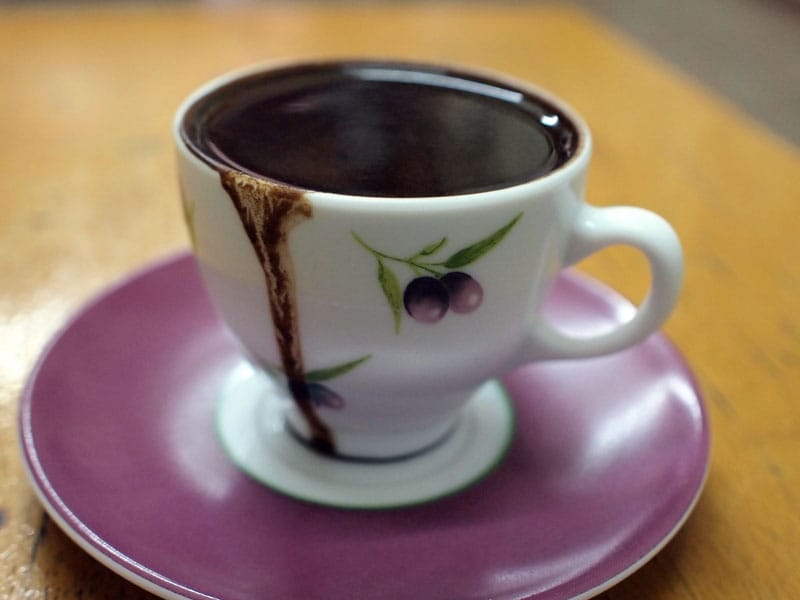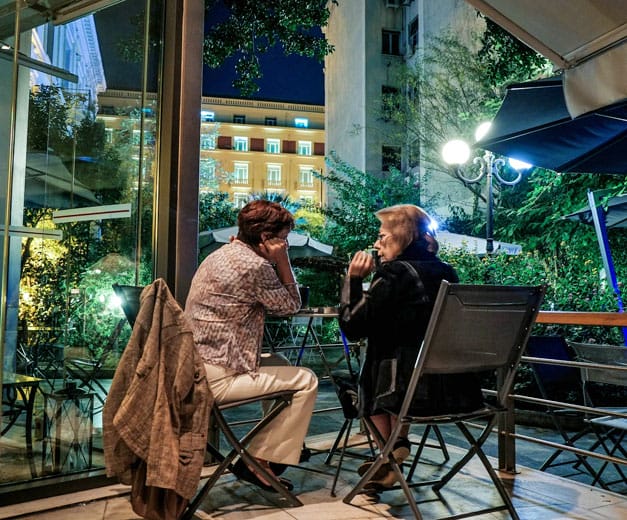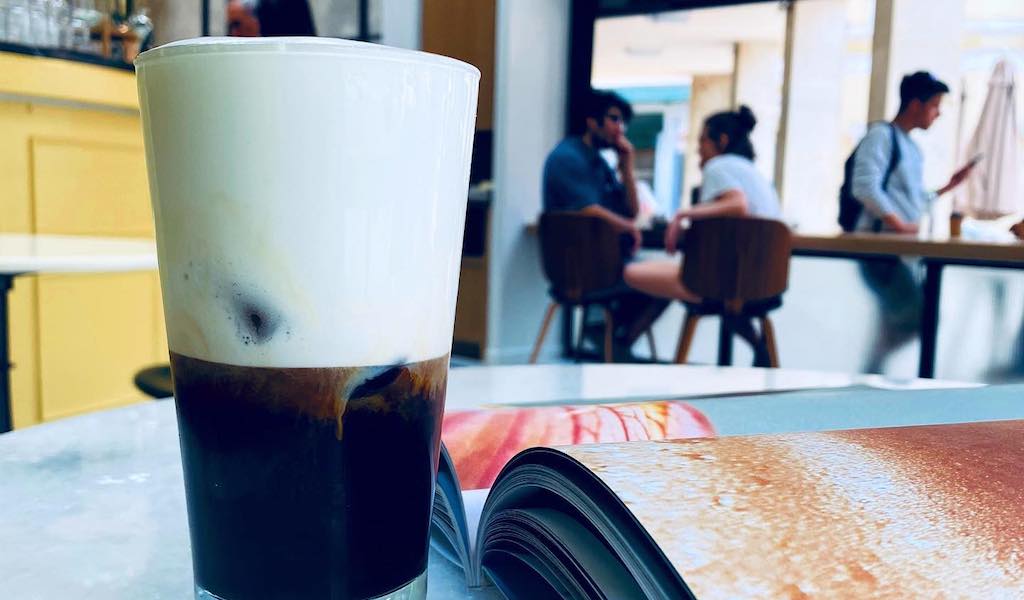Dear Culinary Backstreets,
I keep hearing about Greek coffee but is it any different from Turkish coffee? And do most Greeks actually drink Greek coffee these days or do they drink other types of coffee?
Greek coffee is exactly the same as Turkish coffee – and it was in fact called just that in Greece until Turkey invaded Cyprus in 1974, at which point, for political reasons, the Greeks decided to rename their coffee “Greek coffee.” The process and preparation, though, are identical to the Turkish way.
To make this thick brew, coffee beans are roasted and very finely ground. Then the coffee, sugar and water are mixed in a special tiny aluminum or copper pot called a briki and prepared over low heat. The amount of sugar used is according to taste and it must be added at the beginning (not after brewing, as with other types of coffee). You can order your coffee prepared one of four ways: sketos (plain – no sugar), me oligi (a little sugar, i.e. half a teaspoon), metrios (equal amounts coffee and sugar) or glykos (very sweet – more sugar than coffee). Due to Greek coffee’s strong flavor, most people like to order it with at least a little sugar, otherwise the taste is almost bitter.
Unlike in some other countries in the region, Greek coffee is made plain, without cardamom, pistachios or other spices. Although it is usually served in a tiny demitasse cup, it is not meant to be drunk as a shot but to be sipped slowly, something that goes perfectly with Greek coffee culture. Going out for coffee is in fact one of Athenians’ favorite pastimes, and, in nine out of ten bars and cafés, the coffee is excellent. Traditional Greek coffee is still served in most coffee places – although these days, a lot of the modern venues tend to compromise on quality by making it in an espresso machine.
If you’d like to try Greek coffee prepared in the traditional way, simmered over low heat in a briki, I recommend a trip to my favorite dairy bar, Stani. Or, for even more atmosphere, head to Glykys, a café located on a beautiful cobblestoned side street in Plaka with a cozy courtyard full of flowers and old-fashioned chairs and tables.
This being said, Greek coffee is no longer very fashionable among Athenians. The traditional brew was first undermined by the frappé, a chilled concoction that took Greece by storm in the late ’60s and ’70s and hasn’t completely let go since. To make it, instant coffee, sugar and water are mixed together in a shaker or by hand until as frothy 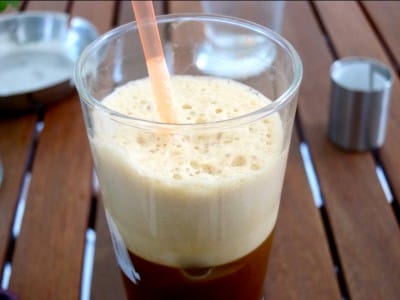 as meringue; the coffee is then poured into a tall glass and then ice and evaporated milk are added according to taste. By the ’80s, the frappé was the number one coffee of choice in the Greek capital. In the ’90s, influenced by international trends, Greeks started drinking espresso and cappuccino. The last decade has seen espresso freddo (iced espresso) and cappuccino freddo (cappuccino with plenty of ice, topped with frothy cold milk) overtaking the frappé as the cold coffees of choice, especially among younger Greeks. A takeaway coffee from a café should cost no more than €2.50. If you choose to sit down, the price will be somewhat higher but, again, you shouldn’t have to pay more than €3-5, depending on the neighborhood.
as meringue; the coffee is then poured into a tall glass and then ice and evaporated milk are added according to taste. By the ’80s, the frappé was the number one coffee of choice in the Greek capital. In the ’90s, influenced by international trends, Greeks started drinking espresso and cappuccino. The last decade has seen espresso freddo (iced espresso) and cappuccino freddo (cappuccino with plenty of ice, topped with frothy cold milk) overtaking the frappé as the cold coffees of choice, especially among younger Greeks. A takeaway coffee from a café should cost no more than €2.50. If you choose to sit down, the price will be somewhat higher but, again, you shouldn’t have to pay more than €3-5, depending on the neighborhood.
It is no surprise that none of the big international coffee chains that have opened have managed to crack the Greek market; the local coffee – be it traditional Greek coffee, plain filtered coffee or espresso freddo – is stronger, of better quality and cheaper than that served by places like Starbucks. In addition, local chains have mushroomed over the last decade and during the economic crisis international brands simply have not been able to compete on value for money – or in mastering the fine Greek art of frothing a frappé.
– Despina Trivolis
(top photo by Yigal Schleifer; bottom photo by Heather Hammel)
 June 25, 2015 Green Scene
June 25, 2015 Green Scene
In terms of greenness, Athens doesn’t even come close to other European capitals, with […] Posted in Athens July 25, 2023 Liquid Assets
July 25, 2023 Liquid Assets
It was August 31, 1957, and Yiannis Dritsas, a representative of Nestlé Greece, was at […] Posted in Athens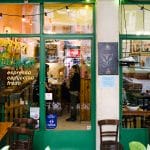 May 30, 2023 Agriolouloudo
May 30, 2023 Agriolouloudo
Introduced during Ottoman times, the kafeneion – the old-fashioned kind of coffee house […] Posted in Athens
Published on February 19, 2013
Related stories
June 25, 2015
AthensIn terms of greenness, Athens doesn’t even come close to other European capitals, with their verdant parks and blossoming gardens. The truth is, modern urban development has not been particularly gentle with this city. Numerous concrete buildings, along with poor road design, hem in inhabitants and visitors with featureless views. Thankfully, there are some oases…
July 25, 2023
AthensIt was August 31, 1957, and Yiannis Dritsas, a representative of Nestlé Greece, was at the 22nd Thessaloniki International Fair. His mission? To present a new iced chocolate drink for kids. It was simple, really: add milk and cocoa powder to a shaker (essentially a cocktail shaker), shake well and serve. During a break, an…
May 30, 2023
AthensIntroduced during Ottoman times, the kafeneion – the old-fashioned kind of coffee house – has long been a fixture in Greece. By 1860, Athens already had more than 100 establishments that were serving what has been called both Greek coffee and Turkish coffee (name debates aside, we can all agree that it’s more or less…







































